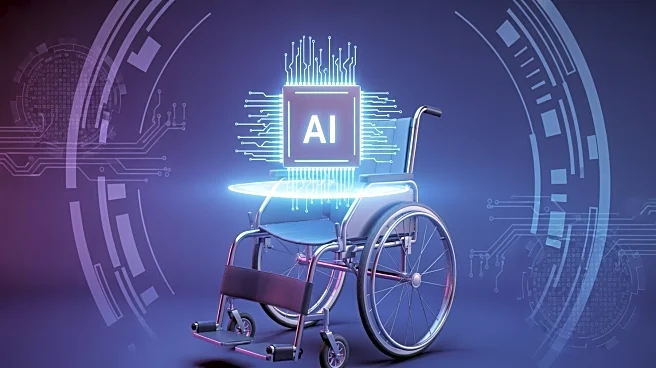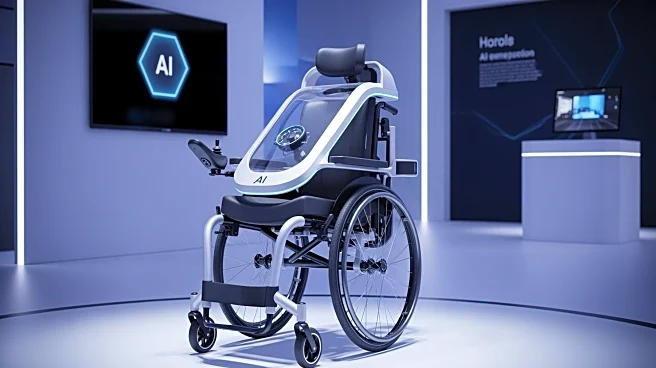What's Happening?
The LLaVA architecture, designed for visual question answering and image captioning, is improving accessibility for blind users through innovative dataset integration and sparse architecture. Utilizing the CLIP-ViT-336px visual encoder, LLaVA maps images
to an embedding space, aligning visual tokens with language models for cross-modal consistency. The architecture incorporates datasets like MS COCO and Visual Genome to enhance scene understanding, crucial for indoor descriptions for blind individuals. A new dataset, IndoorBlindCap-1K, focuses on indoor environment perception, providing annotated images with dialog format to model questions and answers relevant to blind users.
Why It's Important?
This development is significant for enhancing the quality of life for blind individuals by providing more accurate and contextually relevant visual descriptions. By optimizing multimodal alignment and reducing computational overhead, LLaVA offers real-time performance on low-resource devices, making it accessible to a wider audience. The architecture's ability to dynamically incorporate visual information into expert weights ensures efficient processing tailored to the needs of blind users, potentially transforming how assistive technologies are developed and deployed.
What's Next?
Further advancements in sparse architecture and perceptual weight optimization could lead to even more efficient models, capable of providing detailed visual descriptions with minimal computational resources. As the technology evolves, it may expand to cover more complex environments and scenarios, offering comprehensive support for blind individuals in various settings. Continued collaboration between AI researchers and accessibility advocates will be crucial in refining these models to meet the diverse needs of users.
Beyond the Headlines
The integration of sparse architectures in AI models represents a shift towards more efficient and accessible technology. By reducing computational demands, these models can be deployed on devices with limited resources, broadening their reach and impact. This approach also highlights the importance of designing AI systems with inclusivity in mind, ensuring that technological advancements benefit all segments of society, including those with disabilities.













